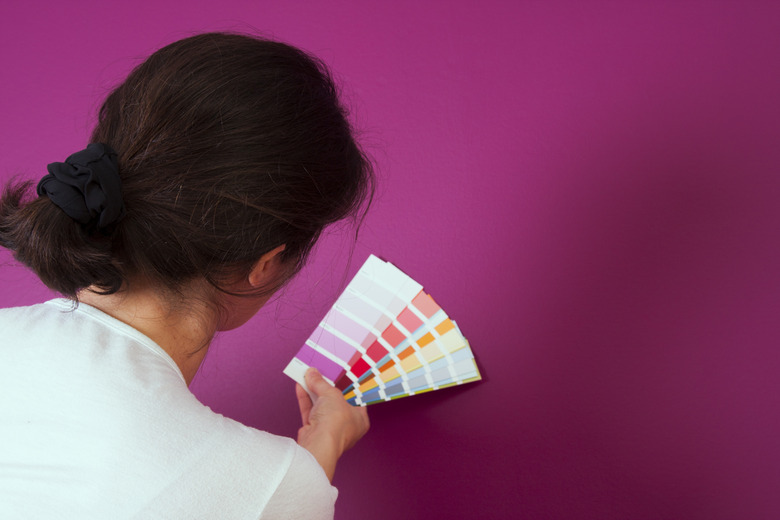How To Match Interior Wall Paint Color
With the right tools and a little insider knowledge about paint color, your chances of finding an exact match for interior wall paint just became much higher. The first step is to clean the walls to ensure what you're viewing is the true paint color. Lighting is also a key element when comparing wall color to samples or taking photographs. Indirect natural lighting provides the most accurate color. How the paint is applied to the wall also affects its appearance, so using the same tools as those originally used can help you achieve the best result.
Eye for Color
Eye for Color
If you feel confident in your ability to scrutinize colors and are simply trying to re-create a wall color you like, you can color match by eye. To do this effectively, you'll need to make a prop by cutting two small squares side-by-side from a sheet of white paper. Gather several paint chip samples from local stores in hues closest to your wall color. Hold your prop against the wall and slip the paint chip behind one of the square cutouts. Let the other cutout show the wall color for comparison. View the different color samples on the chip through the paper window, comparing each with the wall color until you can't see a difference between the two squares.
Color Sample
Color Sample
If possible, use a utility knife to peel off a 2 to 3 inch strip of paint or cut a small 2-by-2 inch piece of drywall from an inconspicuous place on the wall. Take this sample to your nearest paint or home improvement store, where color experts use gadgets such as a spectrophotometer to scan the sample and calculate the exact amount of various pigments needed to make a color match. The paint store will then usually mix the custom color for you.
Smartphone App
Smartphone App
Some major paint companies offer smartphone apps for color matching and to create personalized color palettes. Snap a picture using the phone's camera and crop it to focus on the colors you want to match. Touch or drag your finger across the screen to select a specific color, whether it's a wall or object. A virtual paint strip appears at the bottom of the screen, showing the best possible matches for that color. While completing this process, it's important to keep lighting in mind when taking pictures. Too little or too much light can alter the color of your object and you won't get accurate color-match suggestions. Order color swatches you can further analyze at home under different lighting conditions before making a final decision.
Touch-Up Painting
Touch-Up Painting
A touch-up of an existing wall color is very tricky and several factors can affect the outcome. The sheen of the paint makes a huge difference, as high gloss finishes are almost impossible to touch up without making it obvious. Other factors include color fading, paint that is mixed differently, or using different application methods. The moisture content of latex paint plays a role as well, as when it wicks or gets absorbed into the substrate or surface being painted. The wicking rate affects the final look of the paint. Dilute latex-based paint with water by 5 to 10 percent when performing a touch-up to slow the wicking rate and help blend the new paint into the old. Don't load your brush or roller with paint; the goal is to feather out the touched up area.
